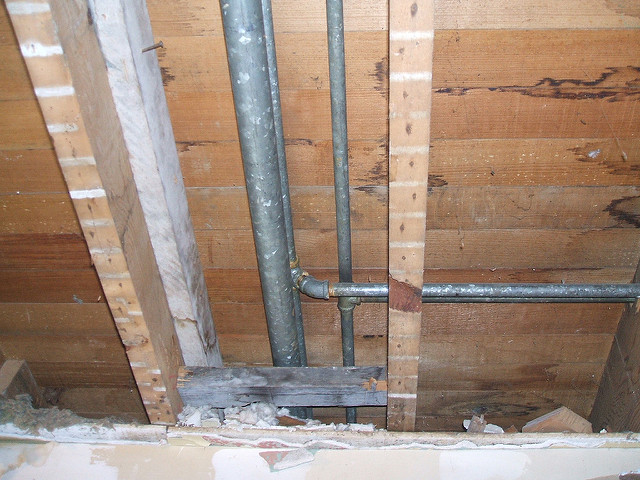6 Ways to Find Concealed Water Leaks in Your House
6 Ways to Find Concealed Water Leaks in Your House
Blog Article
We have encountered this post on Locating water leaks down the page on the web and felt it made perfect sense to discuss it with you on this page.

Early detection of dripping water lines can alleviate a possible disaster. Some small water leaks may not be noticeable.
1. Take A Look At the Water Meter
Every house has a water meter. Examining it is a surefire way that aids you discover leakages. For beginners, shut off all the water resources. Ensure no person will flush, utilize the tap, shower, run the cleaning device or dish washer. From there, go to the meter and also watch if it will alter. Given that no one is using it, there need to be no motions. If it relocates, that indicates a fast-moving leak. Furthermore, if you spot no changes, wait a hr or 2 and inspect back once more. This indicates you might have a slow leak that might even be below ground.
2. Examine Water Intake
If you spot sudden changes, regardless of your intake being the very same, it means that you have leaks in your plumbing system. A sudden spike in your costs shows a fast-moving leak.
A consistent boost every month, also with the very same practices, shows you have a slow leakage that's likewise slowly escalating. Call a plumber to extensively inspect your building, specifically if you feel a warm area on your floor with piping below.
3. Do a Food Coloring Examination
When it comes to water consumption, 30% comes from toilets. If the color somehow infiltrates your bowl during that time without flushing, there's a leak between the tank and bowl.
4. Asses Outside Lines
Do not neglect to check your outside water lines also. Should water leak out of the link, you have a loosened rubber gasket. One tiny leak can squander tons of water and surge your water costs.
5. Inspect and Analyze the Circumstance
House owners need to make it a habit to check under the sink counters as well as even inside cupboards for any kind of bad odor or mold and mildew development. These 2 red flags indicate a leak so prompt attention is needed. Doing routine assessments, also bi-annually, can conserve you from a significant trouble.
Inspect for discolorations and also damaging as a lot of home appliances and also pipelines have a life span. If you think dripping water lines in your plumbing system, do not wait for it to escalate.
Early discovery of dripping water lines can reduce a potential calamity. Some tiny water leakages might not be visible. Examining it is a guaranteed method that helps you uncover leaks. One tiny leakage can squander tons of water and also surge your water costs.
If you presume leaking water lines in your plumbing system, do not wait for it to escalate.
How to Know If Your Home Has a Hidden Leak
Water Meter Reveals Inexplicable Water Usage
If you’d like to test whether or not there’s a leak somewhere in your home, you can do this using your water meter. Here is how to conduct the test:
Don’t use any water in your home for at least 30 minutes; this also means not turning on faucets or water-using appliances.
Go outside, and check your water meter for activity.
If your water meter shows that there was activity, even though no one was using any water, this proves that there is a leak in your home.
Visible Mold or Mildew Growth
Leaks behind walls create moist, dark environments that allow mold and mildew to grow and thrive. Eventually, you might see mold growth forming on the wall closest to a hidden leak.
If mold is growing in an area that receives a high amount of moisture, such as a bathroom, it may simply be an indication that better ventilation is needed. However, if you see mold growth on a wall or the ceiling in an area where you would not expect, you probably have a hidden leak.
Musty, Mildew Odor
Sometimes you might not be able to see the mold or mildew that is growing as a result of a leak. However, the smell can give the problem away just as easily. If you catch a whiff of something musty, there’s a good chance that old water is collecting somewhere in your home that you can’t see.
Stained/Warped Walls, Ceilings, or Floors
When your home soaks up water, a variety of red flags can become visible, including ceiling stains, bubbling drywall, warped walls, and sagging floors. While these issues can be caused by excess humidity, they can also be signs that a pipe or plumbing connection has started leaking behind your walls.
Inexplicably High Water Bill
After a while, you get a general sense for what your water bill should be. If you own a pool or sprinkler system, your bill will tend to be higher during summer. However, if you receive a water bill that seems especially high, and you can’t figure out what caused it, then you may have a hidden leak somewhere that’s increasing your bill.
https://www.plumbingjoint.com/blog/2019/july/how-to-know-if-your-home-has-a-hidden-leak/

I have been very drawn to Hacks to detect leaks and I am hoping you liked the post. Loved our write-up? Please share it. Let somebody else find it. Many thanks for your time invested reading it.
Report this page